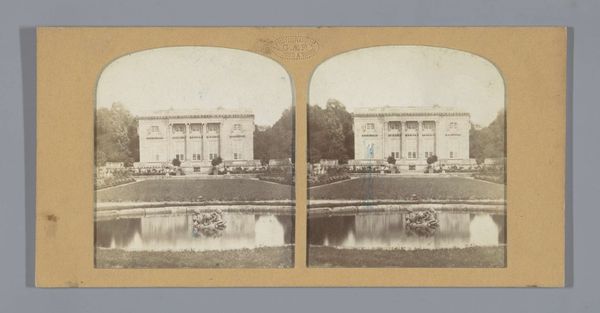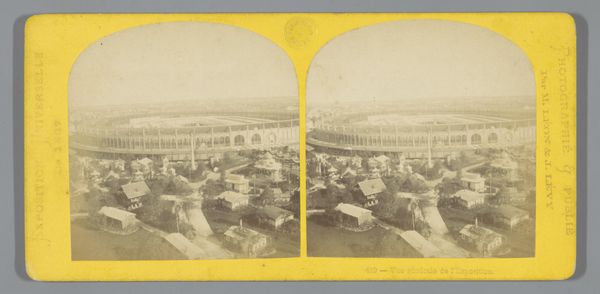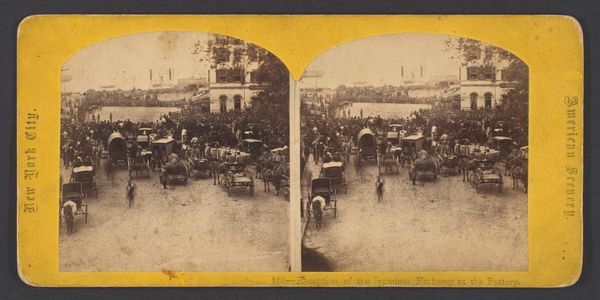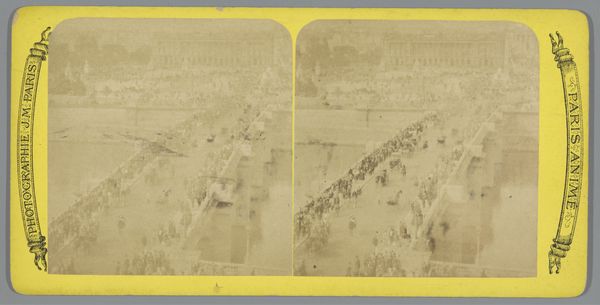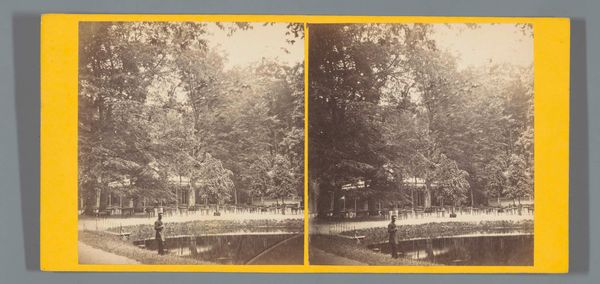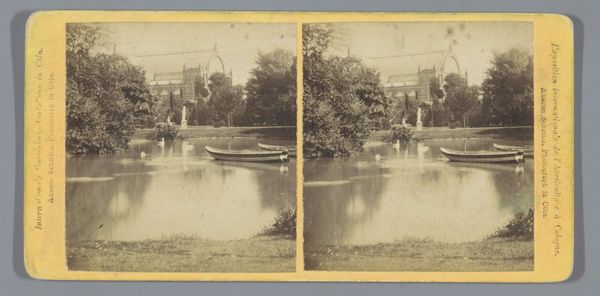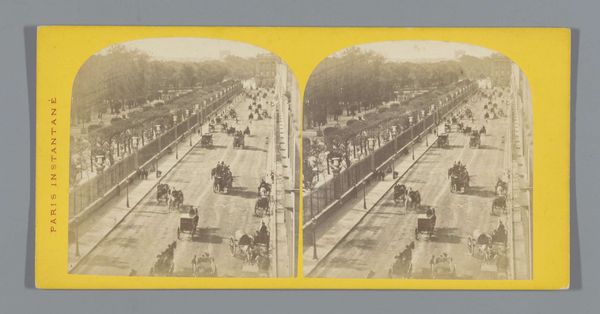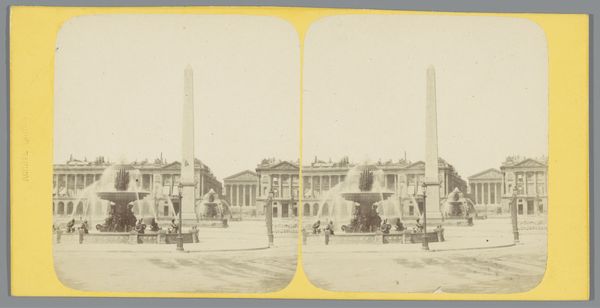
Zicht op de rotsen rondom het zoetwateraquarium op de Wereldtentoonstelling van 1867 1867
0:00
0:00
photography, albumen-print
#
landscape
#
photography
#
cityscape
#
albumen-print
Dimensions: height 83 mm, width 171 mm
Copyright: Rijks Museum: Open Domain
Editor: So, here we have “View of the Rocks Around the Freshwater Aquarium at the 1867 World's Fair” by Léon & Lévy. It's an albumen print photograph, and there’s a certain starkness to the landscape; it feels so deliberate, almost constructed for the viewer. What can you tell us about the socio-political elements? Curator: It’s fascinating to consider this image within the context of the 1867 World's Fair. These exhibitions were incredibly powerful tools for nation-building and displaying technological and cultural progress. This aquarium isn't just about showcasing marine life; it's about French ingenuity, science, and the mastery of nature. Editor: That's really interesting. So the act of showcasing the aquarium is itself a statement? Curator: Absolutely. Think about who controlled access to these displays and who the intended audience was. The photographic medium itself became a democratizing force, making the spectacles available to people who perhaps couldn’t travel to Paris. It’s both a celebration of innovation and a subtle display of power, wouldn't you agree? Editor: Yes, definitely. I guess the choice to photograph this specific section emphasizes that controlled and ordered vision. I see that tower in the background now... What about the choice of photography itself? How was this new medium received back then? Curator: Photography was both revolutionary and, initially, viewed with skepticism by some art critics who didn’t see it as ‘high art’ in the same vein as painting or sculpture. Images like these allowed the dissemination of national ambitions, shaping public perception, yet photography, itself a technological marvel, was showcased. The print medium had a lower barrier to access and thus played a major role in culture dissemination. It had immense socio-political power that the elitists would likely not want the working class to control. Editor: I see, a sort of visual propaganda? Curator: Perhaps that’s too strong a word, but certainly image management, creating a curated version of reality for a particular purpose. Editor: That's a really insightful way to think about it. I definitely appreciate understanding its place in the broader picture. Thanks! Curator: It’s about seeing beyond the surface of the image and understanding its role in a much larger societal narrative, isn't it?
Comments
No comments
Be the first to comment and join the conversation on the ultimate creative platform.
